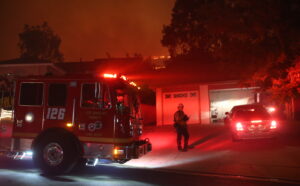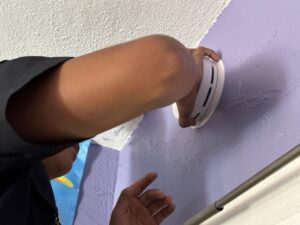It’s not uncommon for Monsoonal Moisture in the atmosphere to flow up from Baja California Mexico into Southern California, bringing thunderstorms to our mountains and deserts. Southern California weather is typically warm and clear, but it’s important to remember that thunderstorms create summer danger, especially if you’re near the beach or out in the open.
The Summer of 2014 has seen a few notable and dangerous thunderstorm events sweeping into the LA Basin and coastal areas as well. A thunderstorm brought thunder and lightning to Venice Beach in late July, killing a 20-year old man in the ocean, and injuring some 14 other people.
The deadly incident serves as a reminder that when there’s thunderstorm activity in the forecast, you should stay out of the water, which is one of the best conductors of electricity. If you hear thunder while swimming, calmly get out of the water and take shelter. You don’t want to be in, or even too close to a pool, a lake or the ocean when a thunderstorm passes. Stay tuned to weather forecasts, so that you’re not taken by surprise. Obey the commands of lifeguards when they order you out of the water because of nearby thunderstorm activity. The good news is that most thunderstorms pass rather quickly. You should be able to get back to the fun in just a little while.
And, be a savvy traveler. Be aware of changing weather conditions and never underestimate the power of water. In early August, a driver was killed when rushing water from a torrential thunderstorm swept his car off a mountain road near Mt. Baldy. Take heed when there are flash flood warnings in the areas in which you’re traveling. Pull over to the side of the road in a deluge, stay in your vehicle, and wait-out the worst of the storm. You may lose some time, but you’ll arrive safely.
Here are some tips for lightning safety issued by the California Office of Emergency Management:
- Seek shelter indoors when a storm occurs, remembering that small outdoor buildings such as dugouts, rain shelters and sheds are not safe. People should move to a substantial building with wiring and plumbing.
- If thunder is audible, there is danger of a lightning strike.
- Once inside, stay away from windows, doors and anything that conducts electricity, such as corded telephones, computers and other electronic equipment.
- Electrical charges in clouds can linger following a storm, so people should wait at least 30 minutes before resuming outdoor activities.
- People should also avoid plumbing fixtures, such as sinks, baths and faucets.
- If stuck outside, avoid elevated areas such as hills, mountain ridges or peaks.
- Don’t use trees, cliffs or overhangs as shelter.
- Stay away from ponds, lakes or other bodies of water.
- Avoid any objects that conduct electricity, such as power lines and wire fences.
Additional tips are available from the National Weather Service online at www.lightningsafety.noaa.gov/.







